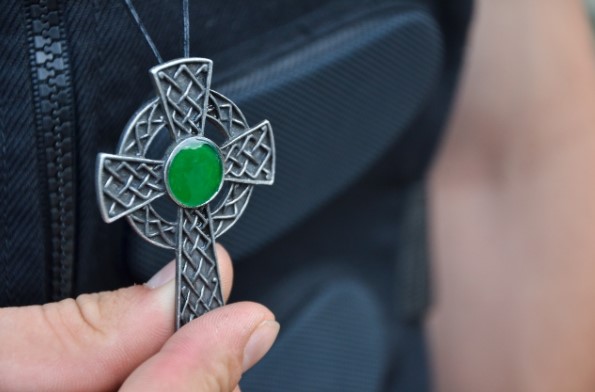As soon as we hear Celtic Jewelry, our minds go Celtic crosses and the Irish Claddagh ring. However, there’s a lot more history behind the Celtic design. When an archeologist mentions Celtic, they are usually discussing the Iron Age European Culture from around 1000 B.C and ending around the Roman conquest. A lot of the Celtic Art we see from that period is commonly from the La Tene period.

Jewelry from La Tene Period
Around 390 B.C, the Greco- Etruscan imports inspired Celtic jewelry. The pieces from this period were silver, gold, and bronze. You can tell it’s from this time as they usually have complicated spirals, S- spirals, and round patterns.
TIP: Make sure to check out this beautiful essential oil jewelry! Aromatherapy is so important to our lives.
How Celtic Jewelry Design became to be
These days most people agree that Celtic design began in the British Isles and Ireland from around the fourth and fifth centuries. The Celtic design was different from any other and engraved on churches and tombstones. It also started to appear on Jewelry, Armour, and religious artifacts, which was new for its time. Both the British and Irish receive credit for the Celtic design, as it’s still unknown as to who was first.
Clear Differences Between Celtic and other Styles
Once you know what you’re looking at, you can’t unsee it. Celtic design sets itself apart as there is a lack of people, usually for that period. Celtic art uses a higher level of intricacy, as every detail and pattern were perfect. There are more geometric lines, spirals, and patterns, were no longer simple. Celtic art was not for the average worker skills were required to achieve this level.
Celtic design – the iron Age
The celts became known in the iron age and used mostly iron and steel in their craftsmanship. Their work was not simple casting as their art required working the metal and creating their unique shapes. Their new techniques produced lighter and stronger armor. They also designed utensils, jewelry, and weapons.
Celtic Jewlery
The Torq
The metal torq is one of the items recognized from the Iron age as it was the Celtic necklace. They were either an iron ring or made out of twisted gold. The Snettisham great torq was discovered in the ’50s and is one example of their extensive work. Torqs were likely to be worn by women unless they are part of a battle dress. Evidence points to the fact that all socio-economic groups wore torqs.
The brooch
Research shows that the brooch had many uses during the Celtic period. Archaeologists discovered many and often in burial grounds. They were made of gold, silver, bronze and likely used as cloak fasters or jewelry. Most came with a safety pin, which also determines the age.
Other jewelry included bracelets, armlets, and anklets. Armlets were discovered only in parts of Scotland. Most were made out of bronze and included enamels.
Today’s Celtic Jewelry
Celtic jewelry has such a rich and significant past. The Celtics used jewelry to provide inner strength and love. People today gift each other with Celtic jewelry when they love that person, as each piece has a lot of meaning. Jewelers can combine the old with the new. It’s incredible to think that jewelry dating so far back, still presents so much in our lives today.
I’m a 20-something stay-at-home mother and wife. I have an amazing husband, a beautiful daughter, two loving dogs, and a lazy cat. I wouldn’t change my life for anything! I love to read, listen to music, cook and blog!

Speak Your Mind